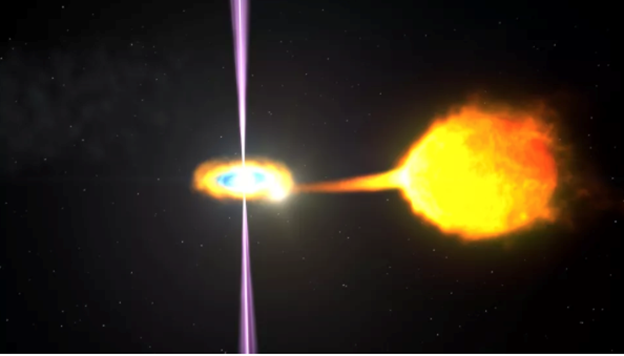Rare “Black Widow” Binary has Shortest Orbit
MIT astronomers have locked onto a mysterious system 3,000 light years from Earth—a “black widow binary.” The rapidly spinning neutron star, or pulsar, is circling and slowly consuming a smaller companion star, just like the mate-destroying spider.
Named ZTF J1406+1222, it has the shortest orbital period yet identified, with the pulsar and companion star circling each other every 62 minutes. It appears to host a third, far-flung star that orbits around the two inner stars every 10,000 years.
The MIT team proposes that the triple system likely arose from a dense constellation of old stars known as a globular cluster. It may have drifted into the Milky Way’s center, where the gravity of the central black hole was enough to pull the cluster apart while leaving the triple black widow intact.
Pulsars power black widow binaries. While astronomers find most black widow binaries through the gamma and X-ray radiation emitted by the central pulsar, the team used visible light, specifically the flashing from the binary’s companion star, to detect ZTF J1406+1222. Usually, pulsars spin down and die quickly as they burn off a tremendous amount of energy, but sometimes a passing star can give a pulsar new life. As a star nears, the pulsar’s gravity pulls away its material, which provides new energy to spin the pulsar back up. The “recycled” pulsar then starts re-radiating energy that further strips the star, eventually destroying it.
The astronomers have not directly detected gamma or X-ray emissions from the pulsar in the binary, which is how they typically confirm black widows. Therefore, until the team can confirm their theory through future observations, ZTF J1406+1222 is considered a candidate black widow binary. They will continue to observe the new system and apply the optical technique to illuminate more neutron stars and black widows in the sky.

